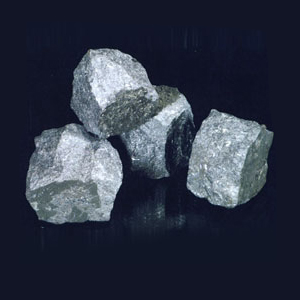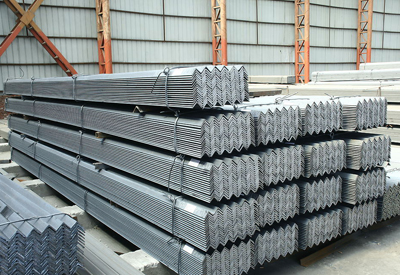[Ferro-Alloys.com] India’s steel consumption to grow 9-10% in FY26: Steel Secretary
India's steel consumption is expected to grow by 9 to 10% in the current financial year, according to Sandeep Poundrik, Secretary of the Ministry of Steel.
He expressed optimism for the sector, citing the impending end of the rainy season and the positive impact of recent goods and services tax (GST) reforms.
Poundrik highlighted that changes in GST are likely to increase steel demand from key sectors such as construction, automobiles, and household consumer durables.
He noted that India is the only major global economy where steel consumption has been growing in double digits for the past three years.
Addressing concerns about imports, the secretary stated that government measures, including a provisional safeguard duty, have been effective. Imports from China have reduced significantly this year, and ongoing anti-dumping investigations are expected to further protect the domestic industry from cheap or substandard steel.
Poundrik believes the Indian steel sector is well-protected and should not be adversely impacted by imports in the near term, which should also help prices to balance out in the coming months.
These are edited excerpts of the interview.
Q: Will GST 2.0 spur demand for the steel sector and could it be relatively impacted because of relatively lower demand from the government? Do you see green shoots coming up post-Diwali?
A: Let us start with the impact of GST on the steel sector, and we see that the consumption is likely to grow with the change in GST and the GST reforms. Primarily four sectors, in our opinion, will impact the consumption of steel and increase the consumption of steel. First is the construction sector, because, as the cement GST has been reduced, so that will incentivise or encourage more construction. Steel is one of the important factors or inputs in construction, so that should increase consumption.
Second is automobile. Again, most of the automobiles, or autos have been brought into lower GST band, so that should incentivise more steel consumption there. Household consumer durables, like refrigerators, ACs, again lower GST, more production, more consumption of steel - so that's on the consumption side. There are more sectors which will incentivise more consumption.
We are expecting that in coming months, the steel consumption will grow. We should also take into account the fact that we are the only major economy in the world where steel consumption is growing in double digits. For last three years, we are growing at 12% and in the first half, almost half April to August of this financial year, we have grown more than 8% in terms of consumption. I see an optimistic scenario for steel consumption because of GST reforms and I also see that as the rainy season ends, we should see more consumption in steel and more demand coming from all sectors.
I will presume that, like the steel sector will continue to show robust growth on the consumption side.
Q: For the year, we should be working with what high single digit growth?
A: As I said, till now, it's 8% for April to August. But I would dare say that because of GST reforms and because of the construction season coming, we should be somewhere around 9 to 10% at least in the consumption growth.
Q: How you are observing moves in China and their implications for the Indian steel sector? There is already a safeguard duty, but a lot is going on in China, and there is a lot of talk of the so-called "anti-involution" policy. They are trying to set their house in order, reduce disruptive price wars. What is your reading of the situation? Are you anticipating more Chinese steel in global markets, including India? Do you think the safeguard duty is adequate, and right now, the Indian steel sector is well protected?
A: A lot of steel is coming into the international market and there is an article you must have seen today which talks about lot of exports from China to other countries. But as far as steel is concerned, if you see the present year data, the imports from China have reduced significantly as compared to last year. That may be due to provisional safeguard duty, which has been imposed by the government, and as Directorate General of Trade Remedies (DGTR) has recommended, to continue the safeguard duty, I would presume that domestic steel sector should get reasonable price and should not be affected because of the cheap or substandard imports.
Also, there are some anti-dumping investigations going on, and DGTR has already recommended imposition of anti-dumping duties on two category of products, one from China, one from Vietnam. So all inclusive, that safeguard duty, anti-dumping, duties on after the DGTR recommendations and after the process, I would say that domestic steel sector should not be adversely impacted because of cheap or substandard steel imports. I don't see that as a possibility, at least in the near term.
Q: The expectation is, and this is from a financial market standpoint, that everything from refined products to steel to chemicals out of China, which is the largest maker of all this stuff, is going to reduce because, there's this anti-involution, they want to prevent a race to the bottom in terms of pricing, so basically, lesser Chinese exports into the world for everything, including steel. So that is one. Could that, in your opinion, if you have looked at this issue, provide a slightly more structural uplift to prices everywhere. And second, the rupee here against the dollar has sharply depreciated. It's down 3.50% year-to-date. I just wanted to get a sense if you have got an eye on that as well?
A: Let me talk about the overall import and export scenario and the impact of measures taken by the government. So if you see, our exports in this financial year, from April to August have, in fact, increased about 16% as compared to same period for the last year, and our imports have reduced 32%. While our imports and exports both are not a big chunk of our total domestic consumption or domestic production, they have an impact on the pricing scenario, because cheaper imports, or whatever imports are happening, they have an impact on domestic pricing, what we may call a benchmarking of the domestic pricing. If cheap imports come, then the domestic prices go down significantly.
If we see the pricing scenario for domestic steel for last maybe three years or so, the domestic steel prices have gone down significantly, as compared to, say, 2022-2023. But after the safeguard measures by government this year, they have stabilised to some extent, but they are still at a lower level as compared to what they were earlier.
On your question about the policy changes in China and the impact on India, I would say that that should help the overall steel industry, because right now the steel industry, in terms of pricing, is not very high. Means the pricing is at very low level as compared to what they were getting earlier. Any such policy changes should help the industry, and that's also important about because we have to invest in the steel sector to cater to the domestic consumption growth we are targeting at 300 million tonne by 2030.
On the dollar-rupee, that will obviously have an impact and impact in both in terms of raw material imports, because we import substantial part of coking coal. So, a depreciation will help. As we don't have much exports that impact I don't see because our overall exports were only 4.5 million tonnes last year, as compared to total production of 152 million tonnes. But on the raw material side, that may have more impact on the steel sector.
Q: All of it put together, you are saying, first of all, there's no reason to worry about any major China import surging. The safeguard duties will take care of it, and the anti-dumping duties, coupled with the demand looking good, GST look good, so the stock market seems to be expecting a price increase, if you go by some of the brokerage reports, etc. Are those hopes well placed? Would you also expect some price increases in the coming months?
A: I would not like to comment on the stock market trends. I can say that the steel sector per se as far as we are concerned, that is looking good. I am optimistic that steel prices because of the increasing consumption and reducing imports, the prices of steel should balance now in coming months, and the industry should show more returns in terms of revenue and everything. But that's the steel sector, per se, I am talking about. I am optimistic about the steel sector in the country.
Q: Just a quick word on the final decision with regard to the safeguard duty from the finance ministry. When is that expected if you could tell us on steel and is there a possibility of some anti-dumping duty on stainless steel imports as well?
A: The safeguard duty, the provisional duty, is applicable till first week of November, 6 or 8th of November. A final decision should be taken before that for continuing the safeguard duty means - that issue should be finalised before that, I would presume.
On the anti-dumping duty on stainless steel, there is an investigation going on by DGTR. So as soon as the DGTR reports comes in, government will take a decision based on that report that investigation is still under process.
Q: We should expect that in the next couple of months?
A: Normally they take a few months- three to four months.
Q: Let us talk about Rashtriya Ispat Nigam Limited (RINL) - the last time you joined us, you were telling us that the pending dues are gradually coming down. They are fired up a couple of their furnaces, and the dues actually were to a listed company, which is NMDC. The state would like to understand, what is the pending dues from RINL how much was it? How much has it come down to?
A: RINL last year, they were in pretty bad shape. They had total dues of about ?35,000 crores. Both - roughly half to the banks and roughly half to the private creditors, including an NMDC. Now after the government's package, they have improved substantially. They are running now all their three blast furnaces. Roughly, I would say 75 to 80% capacity, which they have never done in the past on a sustainable basis. So operationally, they are doing pretty good.
On the finance side, they have reduced significantly their banking loans, banking liabilities, which in turn means that their interest rates have come down for borrowings from the banks. They have started paying back the private creditors too, including NMDC and I would presume it will take some time. We should understand their financial position was so precarious that it will take some time for them to totally balance out, but I would say they are in much better position as compared to last year overall financially.
Q: If you have any kind of sneak peek, things are looking up for the steel sector. NMDC Steel, will it get divested in the remainder of this year? They have turned around things quite a bit. Utilisation levels have moved up. So quick comment on that. And what about SAIL - if things are going to improve, could we see an OFS coming in?
A: So NMDC Steel Limited (NSL), yes, you are right they have significantly improved their performance. In fact, in last one year, they have almost reached, now almost 100% capacity utilisation on the hot metal side and roughly 80 to 90% capacity utilisation on the mill side. So, they have improved significantly.
On the divestment issue decision of the government still stands? There is a cabinet decision that NSL will be divested, so that decision still stands. How fast it will move, it is not Ministry of steel which undertakes the process. So that's for the DIPAM - they can comment on that.
On SAIL, they are doing good. One thing which about SAIL that now they are focusing on mining too. They are, in fact, the second biggest miner of the country of iron ore, and now this year, they have been given a target to also sell iron ore in the market and increase their iron ore production significantly. So, both on iron ore side, mining side and steel side I would think that SAIL will improve and show significantly better results. They are also planning a lot of expansion, so I would say that in this year they should finalise decisions on those capacity expansions.
India’s Steel Consumption Set to Grow 9-10% In FY26, Says Ministry of Steel Secretary
India’s steel consumption is projected to rise by 9 to 10% in the current financial year, according to Sandeep Poundrik, Secretary of the Ministry of Steel, in an interview with CNBC TV18. The outlook is driven by recovering seasonal demand and the positive impact of recent goods and services tax (GST) reforms.
Demand Drivers for Steel
Poundrik highlighted that India is witnessing sustained demand momentum across multiple industries. He stated that changes in GST are likely to boost consumption in construction, automobiles, and household consumer durables. With the rainy season nearing its end, activity in infrastructure and real estate is expected to accelerate, adding further momentum to demand.
India is the only major global economy where steel consumption has been growing in double digits for the past three years, Poundrik noted. This trend underscores the country’s position as a key driver of global steel demand.
Impact of GST Reforms
The recent adjustments in GST are anticipated to strengthen supply chains and reduce input costs, thereby improving affordability and access for downstream industries. These changes are expected to create a multiplier effect, spurring investment and consumption across both urban and rural markets.
Poundrik expressed confidence that these reforms would support the steel sector’s expansion, especially at a time when India is pushing infrastructure growth as part of its economic development strategy.
Government Measures on Imports
Addressing concerns about import pressures, Poundrik pointed out that measures such as a provisional safeguard duty have been effective in reducing inflows. Imports from China, one of the largest exporters of steel, have dropped significantly this year.
He added that ongoing anti-dumping investigations are expected to provide further protection for domestic producers, preventing the entry of cheap or substandard steel into the Indian market. According to Poundrik, these safeguards will allow the local industry to compete more effectively while maintaining quality standards.
Outlook for the Steel Sector
Looking ahead, Poundrik believes the Indian steel sector is well-protected and unlikely to face adverse impacts from imports in the near term. He noted that domestic demand and regulatory support would help prices stabilise in the coming months.
The combination of sustained consumption growth, supportive government policies, and improved market conditions indicates a strong trajectory for the steel industry in FY26.
Conclusion
India’s steel sector is positioned for robust growth, with demand expected to rise by 9-10% this year. Backed by GST reforms, resilient domestic demand, and protective trade measures, the industry is set to play a key role in the country’s infrastructure and industrial expansion.
- [Editor:tianyawei]



 Save
Save Print
Print Daily News
Daily News Research
Research Magazine
Magazine Company Database
Company Database Customized Database
Customized Database Conferences
Conferences Advertisement
Advertisement Trade
Trade






 Online inquiry
Online inquiry Contact
Contact

Tell Us What You Think